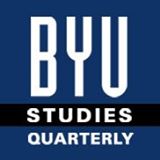BYU Studies Quarterly

Article Title
Defend Your Families and Love Your Enemies: A New Look at the Book of Mormon’s Patterns of Protection
Keywords
BYU Studies, Book of Mormon, Jesus Christ
Abstract
A primary purpose of the Book of Mormon, as described on its title page, is to show “what great things the Lord hath done.”1 The whole narrative serves that goal, being saturated with frequent examples of divine goodness and guidance. Then, in the book’s stunning climax, God’s presence is made most explicit through the personal appearance of the resurrected Lord, Jesus Christ, during which he displays the physical emblems of his compassion and redemption, heals broken bodies and souls, and invites everyone to become “even as I am” (3 Ne. 27:27). The power of divine love is clearly a central message of the text. Interlaced with that divine love, however, are regular episodes of human violence.2 The Book of Mormon narrative opens with lethal threats and a desperate flight into the wilderness, quickly introduces a gory death, morphs into multigenerational warfare, and ends with a catastrophic genocide. The ubiquity of the violence and the ways God frequently intervenes and assists some of the combatants cry out for interpretation. What exactly is the text trying to illustrate about principles of human violence and patterns of divine protection? And how are such principles and patterns illuminated by Christ’s invitation to imitate his selfless love?
Recommended Citation
Pulsipher, J. David
(2021)
"Defend Your Families and Love Your Enemies: A New Look at the Book of Mormon’s Patterns of Protection,"
BYU Studies Quarterly: Vol. 60:
Iss.
2, Article 6.
Available at:
https://scholarsarchive.byu.edu/byusq/vol60/iss2/6
